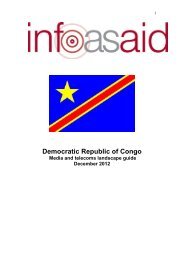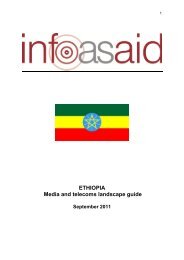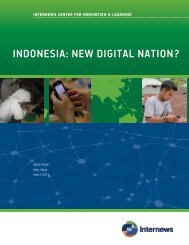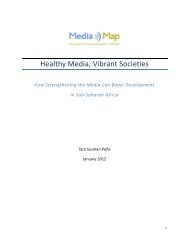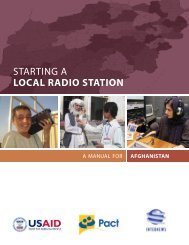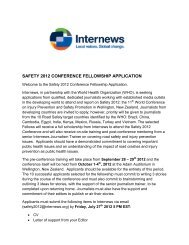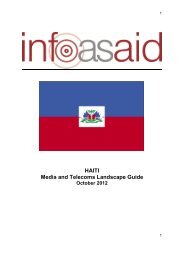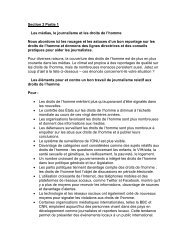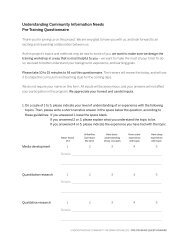media landscape guide about Somalia - Internews
media landscape guide about Somalia - Internews
media landscape guide about Somalia - Internews
- No tags were found...
Create successful ePaper yourself
Turn your PDF publications into a flip-book with our unique Google optimized e-Paper software.
This has led to a high degree of self-censorship by journalists operating in AlShabaab controlled territory, or in places where it has an influence.The internet has proved more difficult for political factions to control since somany online news services are produced overseas by members of thediaspora.Lack of control and regulation has led to the emergence of some highlyunreliable internet news services, the growth of ‘hate speech’, and theunbridled promotion of particular interest groups.But more positively, the global and anonymous nature of the internet has ledto a more fearless attitude amongst journalists who write for the web.They report atrocities committed by all sides and often accompany theirreports with graphic images.Somali is the most effective language for transmitting messages to Somalisinside the country and refugees in neighbouring states.Everybody speaks Somali, at all levels of society. Oral messages, circulatedvia the radio or other means, will reach more people than written ones.According to the CIA Factbook, adult literacy in <strong>Somalia</strong> was 38% in 2001, butthe real figure today is undoubtedly much lower.The UN does not attempt to put a figure on literacy levels. More than twodecades of war have led to the destruction of many schools and the closure ofmany of those that remain.There are a number of sensitive subjects, which are rarely addressed in the<strong>media</strong>.These include homosexuality, which is condemned by Islam and is punishableby death under shari’ah law.Female genital mutilation, which is widely practiced by Somalis is anothersensitive issue, but some radio stations do openly question it.The Somali <strong>media</strong> is heavily dominated by men. Working conditions forfemale journalists can be difficult and, at times, dangerous.Some further education institutions offer courses in journalism and masscommunication, leading to degrees or diplomasThese include the University of Mogadishu, Fairland and Admas universitiesin Hargeisa, and the East Africa University in Bossasso.However, most journalists rely on <strong>media</strong> training programmes offered byinternational development organisations, or they simply learn on the job.18



